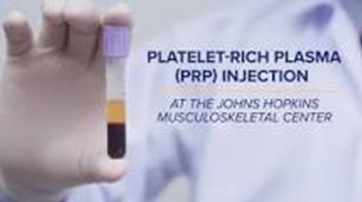PRP Treatment Orthopedics In India Knee / Hip / Osteoarthritis /Joint Pain / Shoulder Arthritis
Osteoarthritis, a degeneration of joints, is becoming more prevalent due to aging and lifestyle changes. At Anup Institute, we take a holistic approach to manage osteoarthritis. Patient education, weight management, and exercise are primary preventive measures. We also offer innovative treatments like Platelet-Rich Plasma (PRP) therapy, which involves using a patient's own blood to potentially delay the progression of osteoarthritis.
PRP therapy introduces platelets to the injured area, releasing growth factors that promote healing in chronic injuries and expedite recovery in acute injuries. This approach aims to increase platelet concentration from 5% to over 90% to enhance the healing process, potentially avoiding the need for knee or hip replacements in some cases.
What is PRP?
PRP, or Plasma Rich Precipitate, is a treatment involving plasma with a significantly higher platelet concentration. It is also known as Platelet-Rich Plasma (PRP), Autologous Platelet Gel, Plasma Rich in Growth Factors (PRGF), or Platelet Concentrate (PC). PRP is created by centrifuging a small amount of a patient's own blood to increase the concentration of platelets suspended in plasma. This process also boosts the concentration of growth factors, which can enhance the healing process.

What is the Reported Usage?
PRP is commonly used for various musculoskeletal injuries, including ligament injuries, chronic tendinitis, knee arthritis, and muscle tears. These injuries can result in severe long-term pain and physical disability, making PRP therapy a valuable treatment option to promote healing and alleviate discomfort.
How do we do it?
The process of preparing PRP involves collecting the patient's blood, which is then centrifuged to separate it into three layers:
This is typically done through two spins, with the first spin separating PPP from the red fraction and PRP, and the second spin further separating the red fraction from PRP. The PRP, which has a higher platelet concentration, is then deposited at the bottom of the tube. This whole process takes about 12 minutes and results in a platelet concentration of 3–5 times that of native plasma.
The growth factors present in PRP can facilitate improved tissue and bone regrowth, as evidenced by studies. PRP has also been associated with greater mechanical strength, which is linked to increased tissue volume enabled by PRP usage. Some studies have demonstrated that PRP may promote muscle proliferation and matrix biosynthesis.
Clinically proven outcomes have shown that PRP treatment can lead to a return to sports with good results for patients with muscle strain injuries. Physiotherapy assessments have revealed optimal strength in isokinetic testing, and in some cases, MRI scans have indicated healing of muscle tears. PRP has also demonstrated positive outcomes in the treatment of lateral epicondylitis (tennis elbow). While there is increasing interest in the use of PRP for various musculoskeletal conditions, ongoing studies aim to establish its safety and efficacy for an even wider range of applications.
FAQs

Platelet-rich plasma consists of two elements : plasma, or the liquid portion of blood, and platelets, a type of blood cell that plays an important role in healing throughout the body.
PRP is obtained from a sample of patients' blood drawn at the time of treatment. A 30 cc venous blood draw will yield 3-5 cc of PRP depending on the baseline platelet count of an individual, the device used, and the technique employed
What Can Platelet-Rich Plasma Treat? PRP injections are used to treat torn tendons, tendinitis, muscle injuries, arthritis-related pain, and joint injuries. They're becoming more common for cosmetic procedures, too
At Anup Institute, we do it as a day care procedure or as Outpatient Services and the cost is far lesser than Hyaluronic Acid ( which is the fluid derived by DNA technique and artificially prepared- may cause a reaction as well)
How long does it take for PRP injections to work? The benefits of PRP injections may take between four and six weeks to be noticeable to the patient. Even beyond this window, the platelet-rich plasma will continue to aid in further healing for anywhere from six and nine months.
But these are rare as patients own blood after preparation is injected in ones own body.
The most common way to prepare PRP involves centrifuging a patient's blood sample. A vial of blood is placed in a centrifuge, where it is spun at intensely high speeds. The spinning causes the blood to separate into layers: Red blood cells, approximately 45% of blood, are forced to the bottom of the vial.

CONSULT AIOR FOR ORTHOPAEDICS PROBLEMS
Call Now 0612-2368881, +91-9931306306 and receive Top Quality Healthcare for you and your Family

